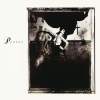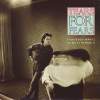
Mainstream mix engineers often spend a great deal of time and effort trying to ensure the best possible lyric intelligibility for their lead vocal parts, but the unnecessarily poor diction of some artists really doesn’t make that job any easier – I’m thinking of songs like Bon Iver’s 'Calgary', Saint Jhn’s 'Roses (Imanbek Remix)', or Ariana Grande’s 'No Tears Left To Cry'. However, there are some situations where diction problems are caused by the nature of the melodic writing, as in this song.
The bit I’m referring to is the vocal’s title hook, which, let’s be honest, would be really difficult to decipher by ear if you didn’t already know what it was supposed to be. But it’s not because Roan’s diction in general is sloppy – I think it’s simply because the line moves into such a high register, and that makes it trickier to manage the physical mechanics of clear enunciation without cracking the notes. On the whole, notes pitched towards the upper extremes of a singer’s range involve a delicate balance of breath support and vocal control, and it’s therefore not easy to cleanly alternate such notes with the complex dynamic physiological changes and breath-stream interruptions of consonants.
In addition, high head-voice notes like these tend to be heavy on fundamental frequency and short on upper harmonics, which causes a second intelligibility problem. You see, we differentiate between vowel sounds on the basis of their characteristic patterns of upper-midrange vocal-tract resonances (the so-called ‘vocal formants’), but these resonances become less and less apparent the less frequency energy the vocal is generating in that spectral zone. So when high-register notes become mostly fundamental frequency, the vowel sounds start blurring together into various shades of ‘oo’ and ’er’.
But, while all this means that I don’t entirely blame Roan for the poor lyric intelligibility under the circumstances, I’d also say that she didn’t need to be defeatist about it either. She could, for example, have had one of the call-and-response backing vocals in a lower register to clarify the words – that would have been a fairly simple sticking plaster. Or she could have done what Sabrina Carpenter cannily did in her widely praised cover version, namely sing the first chorus down the octave, giving better intelligibility and also leaving more room for arrangement development.
Another thing that really caught my attention was the outro’s gradual tempo/pitch fall-off, which is another of those quirky production hooks that it looks like we’re increasingly going to need as humans to differentiate our work from the output of AI music generators, particularly with songs based around four-bar sections and unimaginative one-chord-per-bar chord patterns – such as the IV-V-I-vi that underlies two thirds of this song, for instance. On the face of it, the combined tempo reduction and pitch drop might sound like a simple ’tape slow-down’ effect, but what’s interesting about it is that the tempo and pitch changes aren’t actually linked in that way – by my reckoning, you’d get a pitch-drop of about a tritone if you tried to slow down the tempo that much on tape (or indeed on an old-style sampler), rather than the half-step pitch-drop on display here. So clearly the tempo and pitch changes were deliberately implemented separately, which, thinking about it, kind of makes sense, because a tritone drop in Roan’s vocal formants would have made her sound more like Cher with an epic hangover! Exhibit A: play_arrow | get_app










